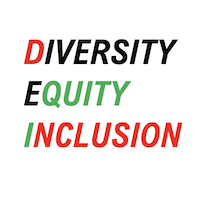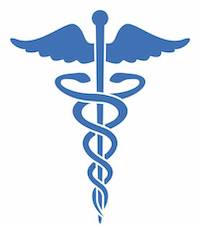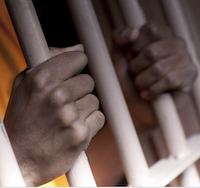If you or anyone you know is struggling with thoughts of self-harm or suicide, you can get help by calling the confidential National Suicide Prevention Lifeline at 800-273-TALK.
Teen mental health already was deteriorating before the coronavirus pandemic. In the two years since, the isolation, grief and anxiety created by school closures, deaths and loss of family income have led to even steeper declines in children’s mental health, experts say.
Awash in federal pandemic relief money — roughly $190 billion in education and health grants over the next four years — states are responding.
Last year, 38 states enacted nearly 100 laws providing additional resources to support mental wellbeing in K-12 schools, according to the National Academy for State Health Policy, a Portland, Maine-based policy research group. Dozens of additional school mental health bills became law this year in at least 22 states, according to the group.
“That’s a huge increase in legislative activity over anything we’ve seen in recent years,” said Tramaine EL-Amin, client experience officer at the National Council for Mental Wellbeing, a nonprofit that represents mental health providers.
“The pandemic shined a spotlight on our children’s mental health,” she said. “There’s no question that it’s something we need to pay attention to and that we need to act pretty quickly so that things don’t get worse.”
Broadly, the new state laws aim to upgrade school mental health resources and create comprehensive plans to prevent teen suicides and promote child mental wellbeing.
A central theme in many of the pandemic-inspired new laws is mental health training.
At least 16 states, from Alaska to Massachusetts, plus the District of Columbia, now require K-12 teachers and other school staff to take training courses on how to recognize mental distress in students and what to do when they see it.
California, Connecticut, Illinois, Kentucky, Rhode Island, Utah and Washington enacted new laws recommending high school students take mental health training courses so they can help their friends, family and classmates.
“Teachers are critical to identifying students who need mental health supports,” said Nancy Lever, co-director of the National Center for School Mental Health at the University of Maryland School of Medicine.
“But we also need to make sure that parents and other school staff who interact with students are trained to recognize mental health crises and understand how trauma affects children’s mental health and learning,” she said.
In addition to laws aimed at training teachers, bus drivers, and security and lunchroom staff, states also are providing money to help schools meet recommended ratios of students to mental health professionals, including counselors, psychologists and social workers.
In some states, new laws provide money for mental health screening and data collection tools that schools can use to develop long-range mental health strategies and measure their progress. Other laws require school boards to develop evidence-based plans for protecting the mental health of K-12 students.
“This is not new territory,” Lever said, “but it’s important territory that schools need to plan for so they can promote the mental wellbeing of all students and staff, and at the same time, identify and care for those in crisis.”
A key to schools’ success will be building in sustainability so the programs can go on when the funding ends, she added.
Plummeting Mental Health
The COVID-19 pandemic exacerbated an already growing crisis in adolescent mental health. Last year, a group of pediatricians, child psychiatrists and children’s hospitals declared a state of emergency for children’s mental health.
In 2019, a national survey conducted by the federal Substance Abuse and Mental Health Services Administration showed that the percentage of young people ages 12 to 17 who reported experiencing a major depressive episode in the past year had nearly doubled over the past decade, increasing from 9% or 2.2 million children in 2004 to 16% or 3.8 million children in 2019.
By 2021, more than a quarter of U.S. parents reported their adolescent had seen a mental health specialist, with 59% doing so in the past year, according to a survey published last month by the C.S. Mott Children’s Hospital at the University of Michigan.
Suicide is now the second leading cause of death among children 10 to 14, according to the federal Centers for Disease Control and Prevention.
In 2020, emergency room visits for suspected suicide attempts by girls 12 to 17 jumped 51% compared with 2019, according to CDC data.
This month, the federal health agency reported that in the first half of 2021, more than 4 in 10 high school students surveyed said they had “persistent feelings of sadness or hopelessness” in the prior year, which was one of isolation and school closures for most teens.
“These data echo a cry for help,” CDC acting Principal Deputy Director Dr. Debra Houry said in a news release. “The COVID-19 pandemic has created traumatic stressors that have the potential to further erode students’ mental wellbeing. Our research shows that surrounding youth with the proper support can reverse these trends and help our youth now and in the future.”
But mental health experts say schools, which are often the only place troubled youth can look to for help, are not prepared to address the growing adolescent mental health crisis.
Historically, most states have failed to meet national minimum standards for the number of students served by mental health professionals, including school psychologists, counselors and social workers.
Only Idaho and the District of Columbia meet the recommended ratio of one school psychologist for every 500 students. At the bottom of the list, Georgia schools employ only one psychologist for every 6,390 students, according to America’s School Mental Health Report Card, published in February by a coalition of mental health organizations.
No state meets the nationally recommended ratio of one social worker for every 250 students. Farthest behind, West Virginia employs one social worker for 15,433 students. And only New Hampshire and Vermont meet the standard of one counselor for every 250 students.
Mental Health First Aid
The number of K-12 schools signing up for one of the most commonly used mental health training programs, called Mental Health First Aid, jumped 17.5% since the end of last year, according to the National Council for Mental Wellbeing, which administers the course.
“Every state in this country has adopted youth mental health first aid in some schools in some way,” the council’s EL-Amin said. “This year’s surge in legislative activity is helping get the word out.”
Developed and tested in Australia, the roughly 32-hour training program was adopted in the U.S. in 2008 by the council in collaboration with the Maryland Department of Health and Mental Hygiene and the Missouri Department of Mental Health.
With 25,000 instructors, the evidence-based curriculum has been used to train 2.7 million Americans in a variety of professions. Offered online and in person, the course teaches people to recognize the signs of a mental health or substance use problem, respond to someone in crisis rather than turn away and urge the person to talk to a mental health professional.















